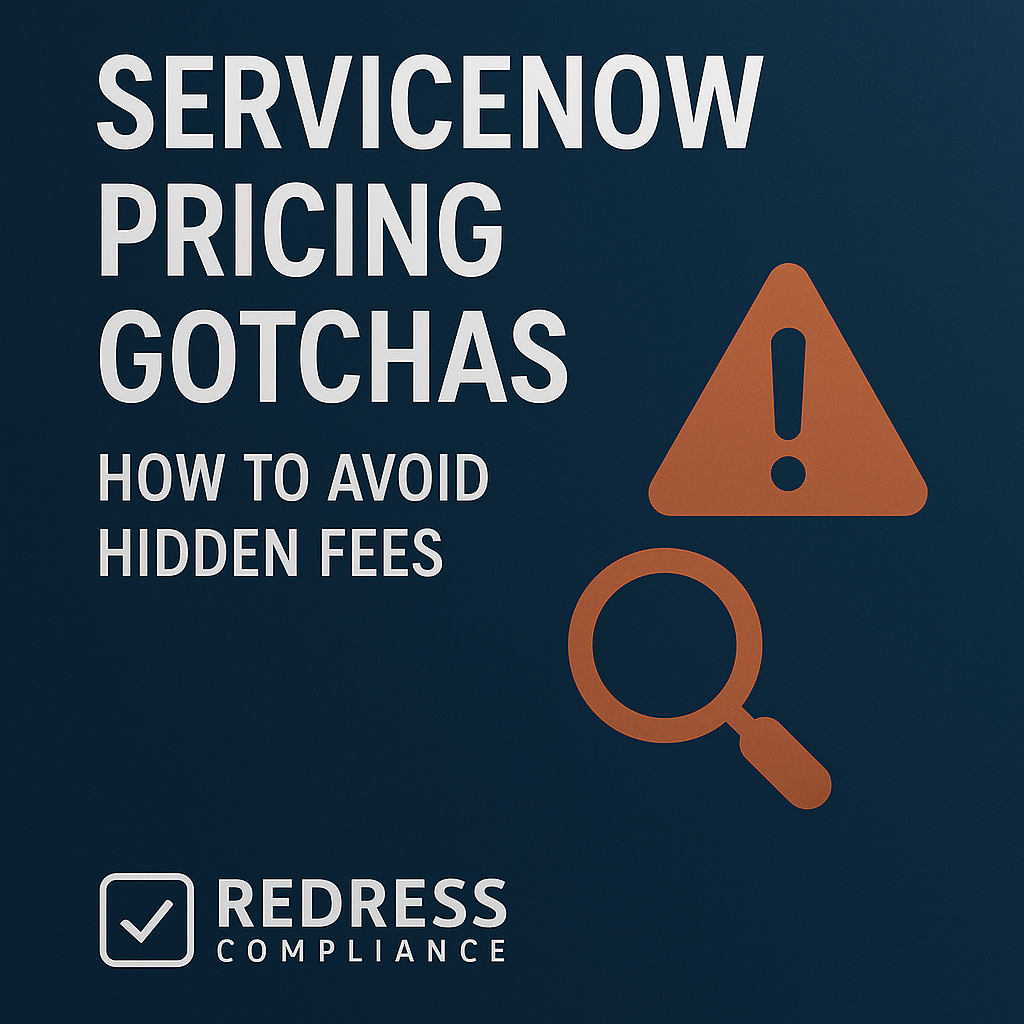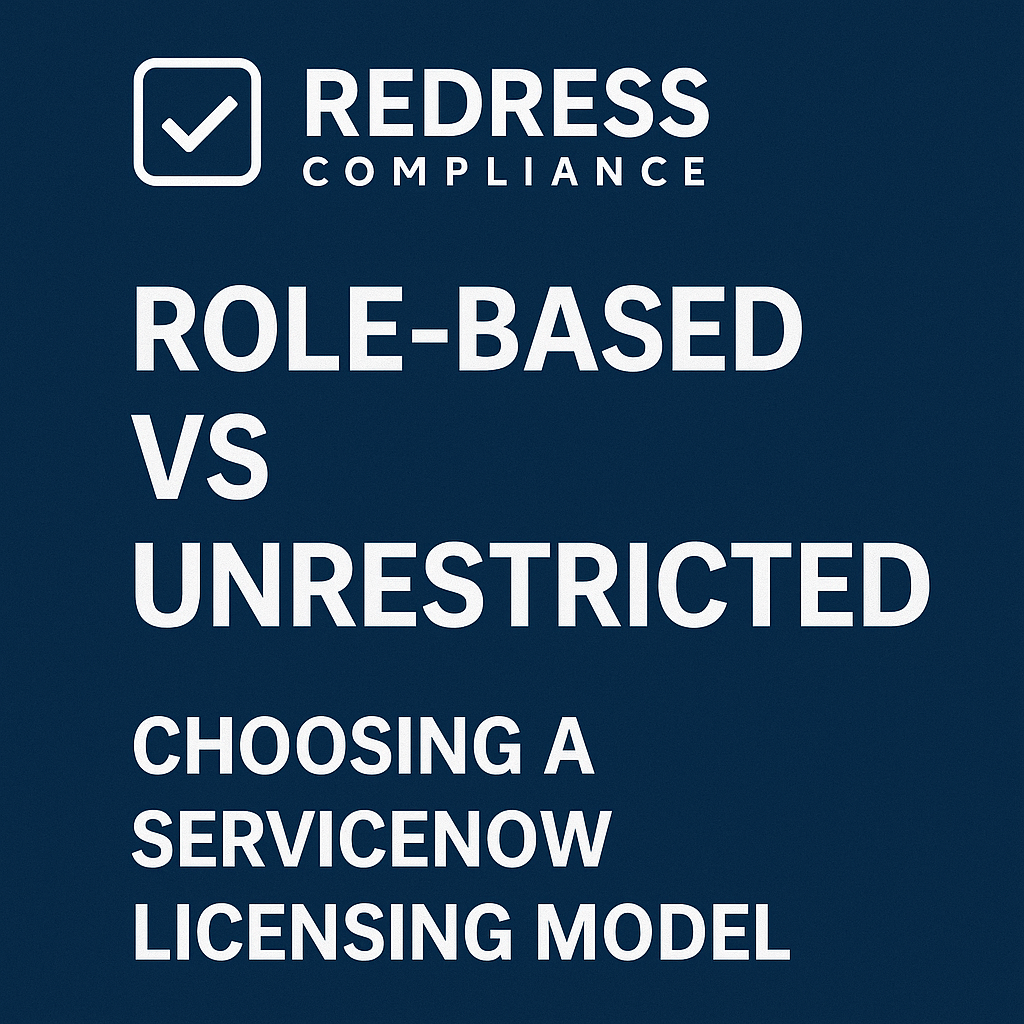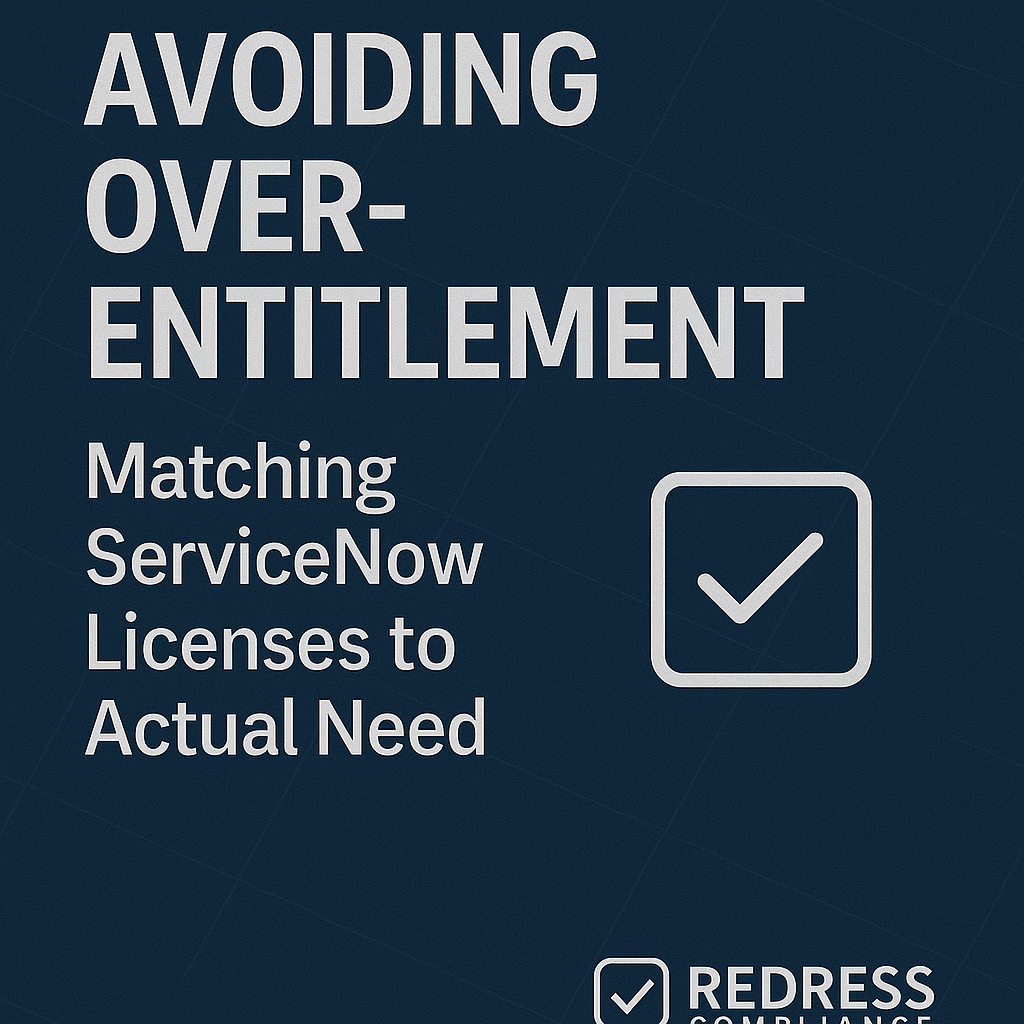Understanding ServiceNow Pricing Gotchas and Hidden Fees
ServiceNow’s platform might seem straightforward to budget for – until surprise costs surface after the contract is signed. Many organizations believe they’ve accounted for everything, only to discover unplanned expenses from extra modules, usage overages, or features that weren’t clearly disclosed. These subtle “gotchas” are hidden fees that inflate your spend after the ink dries.
Understanding these cost traps is critical before you commit to a ServiceNow deal. In the next sections, we’ll explain why hidden costs exist, how they sneak into contracts or renewals, and how to spot and eliminate them. Consider this an insider’s guide to negotiate with eyes wide open – so you won’t face budget-busting surprises later.
Read our ultimate guide, ServiceNow Pricing: SKU, Module Packages, and Hidden Gotchas.
The Nature of ServiceNow’s Hidden Costs
One big reason is how ServiceNow structures its offerings. The platform is composed of many modules and features, each often sold separately. ServiceNow frequently adds new SKUs for emerging capabilities – think add-ons for AI, integrations, or industry-specific solutions. This rapid SKU expansion means that what you assume is included might actually be an extra line item.
Overlapping dependencies add to the confusion. Buying one ServiceNow module sometimes quietly requires another. For example, implementing IT Operations Management (ITOM) may necessitate a separate Discovery or Service Mapping license. If those dependencies aren’t clearly spelled out, you won’t see those costs until you’re already committed.
Even the initial sales quote can obscure true costs by listing items as “TBD” or “usage-based” with no price. Such placeholders often turn into real charges down the road once you start using the platform.
Pro Tip: If you see “TBD” or “usage-based” in your quote, assume it’s a future cost.
Common ServiceNow Pricing Gotchas
Let’s look at some of the most common pricing pitfalls that customers face. These hidden cost types show up time and again:
| Hidden Cost Type | Description | Example Impact |
|---|---|---|
| Integration Fees | Integration Hub connectors or “spokes” not included in base licensing. | +$150K/year unexpected charge |
| Storage Overages | Exceeding default storage limits (database or attachments). | +10–20% of annual subscription cost |
| Add-On Modules | Required enablers for certain workflows not initially quoted. | “Bought CSM, had to add Portal Builder SKU” |
| Premium Support | Higher-tier support SLAs come at a significant upcharge. | +$100K+ annually |
| Renewal Uplifts | “Promotional” first-year pricing expires, causing a jump in Year 2+. | 7–12% cost increase at renewal |
Integration connectors and storage overages are two classic hidden fees. Adopting a new module might force you to add another (for example, buying CSM often means paying for a portal or knowledge base too). Opting for premium support or reaching Year 2 can even inflate costs beyond your initial budget.
For example, a logistics firm added ServiceNow’s IT Operations Management module to automate infrastructure tasks. They later discovered the needed Integration Hub connectors were not included, adding roughly $200K in unforeseen costs.
Pro Tip: Any module that “connects” or “extends” usually has its own license SKU.
Module Dependencies That Trigger Extra Fees
Another source of surprise costs is hidden module dependencies. ServiceNow modules often aren’t as standalone as they appear. You might license a product like IT Operations Management (ITOM), only to learn it requires additional components that weren’t in your original quote. It’s like buying a car and then finding out certain features are sold separately.
Common examples include ITOM needing the Discovery and Service Mapping modules (each sold separately) to fully map and monitor your infrastructure. Similarly, suppose you deploy Customer Service Management (CSM). In that case, you may need to enable a customer self-service portal and knowledge base – features that might only come with another license or upgrade. Building custom applications on ServiceNow’s App Engine can even trigger extra licensing if certain integration actions or high app volumes are involved.
Consider a real scenario: a retail company built 30 custom apps using App Engine, assuming their current license covered it. Mid-contract, they were hit with additional fees because their extensive app count pushed them into a higher App Engine tier. They had unknowingly crossed a usage threshold, activating a costly upgrade they hadn’t budgeted for.
Pro Tip: Always ask which SKUs are required for the functionality you plan to use.
Data, Volume, and Usage-Based Costs
ServiceNow’s pricing isn’t just about which modules or how many users you have – it can also depend on how much you use the platform. Some costs scale with data volume or activity. For instance, certain ServiceNow features (especially in IT Operations or IntegrationHub) are metered by the number of “nodes,” transactions, or API calls. If your usage exceeds the included threshold, your costs will increase as well.
Storage is a big one: your subscription includes a set amount of database and file storage. Heavy usage – say, an HR service delivery implementation with thousands of employee cases and attachments – can quickly exceed those limits. When you exceed your current storage limit, ServiceNow will charge for additional storage or require you to purchase a larger storage tier. These volume-based charges often catch teams off guard if they haven’t been monitoring their consumption.
For example, one global bank deployed ServiceNow HR Service Delivery for over 10,000 employees, accumulating a massive volume of case data and attachments. By month nine, they blew past their included storage capacity and incurred an unexpected $300,000 in additional fees.
Pro Tip: Ask for a usage baseline and a growth model — and pre-negotiate what happens if you exceed it.
The Renewal Shock – Expiring Discounts and CPI Uplifts
Renewals can bring their own sticker shock. ServiceNow often provides deep first-year discounts to win your business, then those incentives expire by Year 2 or 3, causing a sudden cost spike.
It’s common to see a 7–10% (or higher) increase at renewal if you don’t negotiate price protections. Many contracts bake in automatic uplifts tied to inflation or a fixed percentage. If you assumed the Year-1 rate would hold, such increases can blow a hole in your budget. Also, if you buy fewer licenses at renewal than you did initially, you could lose your volume discount – effectively raising the per-license price.
Pro Tip: Ask for flat pricing or CPI-linked caps through the term of the agreement.
Real-World Pricing Traps (Benchmark Examples)
To see how these costs play out in practice, here are a few real-world examples of pricing gotchas and their budget impact:
| Scenario | Description | Impact |
|---|---|---|
| ITSM + ITOM Bundle | Missed that Discovery licenses were priced per node, leading to a surprise true-up after deployment. | +$400K mid-term true-up |
| HRSD Rollout | 10,000 employees’ cases and attachments exceeded included storage within 9 months. | +$150K in storage fees |
| CSM Expansion | AI Virtual Agent was enabled, requiring an upgrade to CSM Pro for all support agents. | +$200 per user license |
The bottom line: missing a detail like per-node licensing, storage limits, or the licensing of an “automated” feature can quickly turn into a budget shock.
Pro Tip: If a module sounds “automated” or “intelligent,” it’s probably tied to a higher-cost SKU or add-on.
Read ServiceNow SKU Pricing: Key Modules and Cost Drivers.
Mitigating and Negotiating Hidden Fees
Protecting yourself from hidden fees comes down to diligence in the negotiation phase. Start with a thorough line-by-line review of the quote or renewal order form. Question any vague or zero-cost line items (like “TBD” placeholders). Make sure you fully understand what each SKU covers and that no necessary component is omitted.
Next, have a candid conversation with your ServiceNow rep about potential extras. Ask for a complete list of any additional modules or dependencies required for the capabilities you need. If you anticipate heavy integrations or high usage, bring those up and seek clarity or fixed terms upfront.
Use negotiation to preempt surprises. Bundle related SKUs or secure extra capacity now (for example, include more storage or integration transactions in your deal) rather than paying a premium later. Also, discuss renewal terms early and push for multi-year price locks or caps on annual increases. Finally, get all promises in writing – if a feature is said to be included, ensure the contract clearly reflects that.
Pro Tip: Make ServiceNow confirm in writing that no additional SKUs will be required for your planned use case.
5 Insightful Next Steps for Buyers
Before you sign or renew with ServiceNow, take these steps to avoid hidden fees:
- Request a full SKU list: Get a complete list of all SKUs (modules, plugins, etc.) required for the features you plan to use. Ensure no necessary item is left off the quote.
- Model usage growth: Forecast how your user counts, transactions, and data storage might grow. Identify where you could hit limits (storage, API calls, etc.) and raise those scenarios upfront.
- Confirm “included” features: Get any “included” features or integrations confirmed in writing. You don’t want to pay later for something promised as free.
- Cap renewal increases: Negotiate caps on renewal pricing in the initial contract (e.g., no more than a 5% annual increase, or flat pricing for a set term).
- Audit before renewal: Do an internal usage audit a few months before renewal. Spot any looming overages or unlicensed usage and address them before negotiating the next term.
Read about our ServiceNow Negotiation Service.


